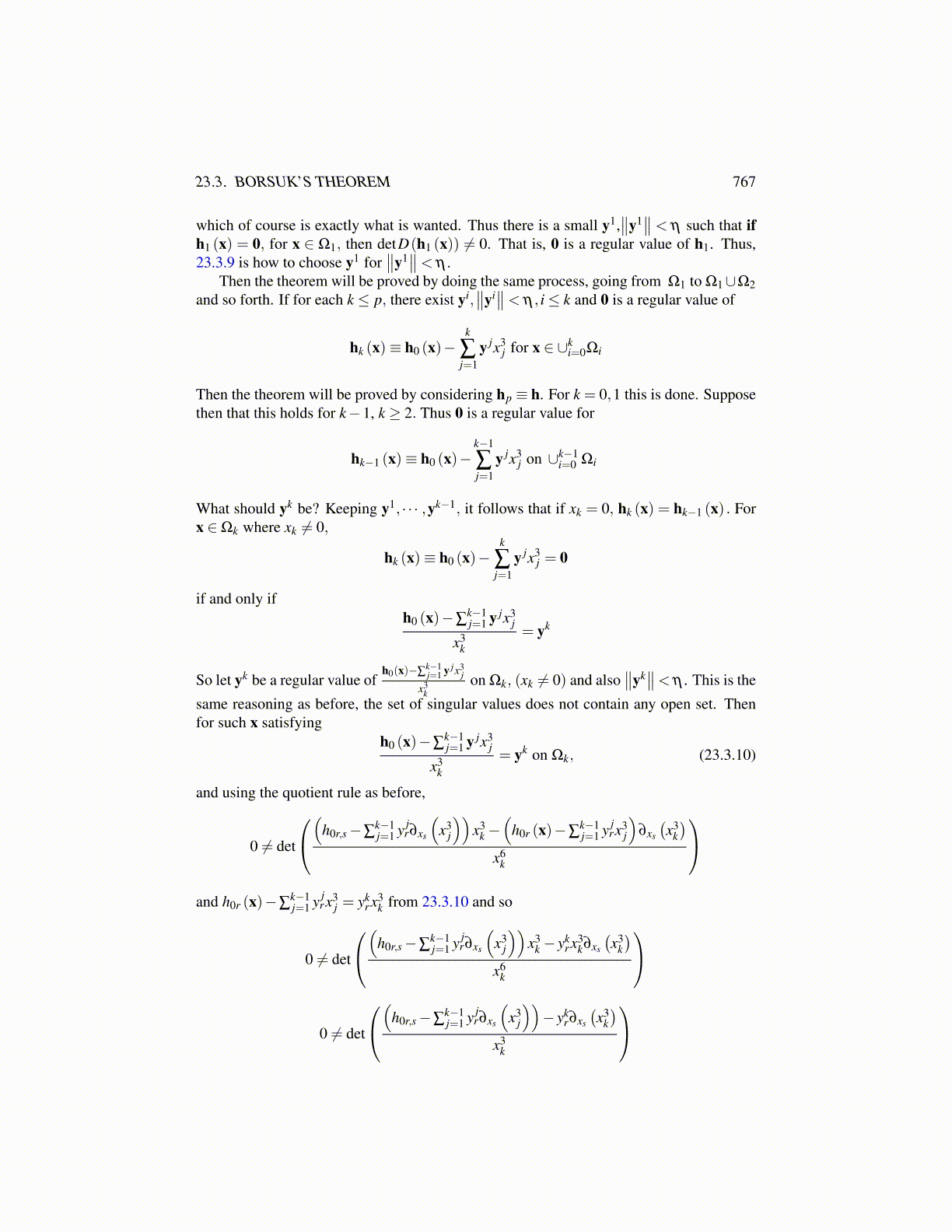
23.3. BORSUK’S THEOREM 767
which of course is exactly what is wanted. Thus there is a small y1,∥∥y1∥∥ < η such that if
h1 (x) = 0, for x ∈ Ω1, then detD(h1 (x)) ̸= 0. That is, 0 is a regular value of h1. Thus,23.3.9 is how to choose y1 for
∥∥y1∥∥< η .
Then the theorem will be proved by doing the same process, going from Ω1 to Ω1∪Ω2and so forth. If for each k ≤ p, there exist yi,
∥∥yi∥∥< η , i≤ k and 0 is a regular value of
hk (x)≡ h0 (x)−k
∑j=1
y jx3j for x ∈ ∪k
i=0Ωi
Then the theorem will be proved by considering hp ≡ h. For k = 0,1 this is done. Supposethen that this holds for k−1, k ≥ 2. Thus 0 is a regular value for
hk−1 (x)≡ h0 (x)−k−1
∑j=1
y jx3j on ∪k−1
i=0 Ωi
What should yk be? Keeping y1, · · · ,yk−1, it follows that if xk = 0, hk (x) = hk−1 (x) . Forx ∈Ωk where xk ̸= 0,
hk (x)≡ h0 (x)−k
∑j=1
y jx3j = 0
if and only ifh0 (x)−∑
k−1j=1 y jx3
j
x3k
= yk
So let yk be a regular value ofh0(x)−∑
k−1j=1 y jx3
j
x3k
on Ωk, (xk ̸= 0) and also∥∥yk∥∥< η . This is the
same reasoning as before, the set of singular values does not contain any open set. Thenfor such x satisfying
h0 (x)−∑k−1j=1 y jx3
j
x3k
= yk on Ωk, (23.3.10)
and using the quotient rule as before,
0 ̸= det
(
h0r,s−∑k−1j=1 y j
r∂xs
(x3
j
))x3
k−(
h0r (x)−∑k−1j=1 y j
rx3j
)∂xs
(x3
k
)x6
k
and h0r (x)−∑
k−1j=1 y j
rx3j = yk
rx3k from 23.3.10 and so
0 ̸= det
(
h0r,s−∑k−1j=1 y j
r∂xs
(x3
j
))x3
k− ykrx3
k∂xs
(x3
k
)x6
k
0 ̸= det
(
h0r,s−∑k−1j=1 y j
r∂xs
(x3
j
))− yk
r∂xs
(x3
k
)x3
k